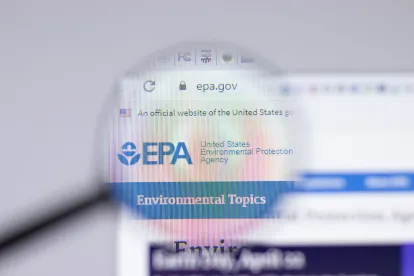On July 28, 2022, the US Environmental Protection Agency (EPA) published the 2021 Toxics Release Inventory (TRI) preliminary dataset that provides public access to data about chemical releases, waste management, and pollution prevention activities that took place in calendar year 2021 at more than 20,000 federal and industrial facilities across the country. The 2021 preliminary dataset, which for the second year includes reporting on per- and polyfluoroalkyl substances (PFAS) added to the TRI by the 2020 National Defense Authorization Act (NDAA), has not yet undergone the complete TRI data quality process. EPA plans to publish the quality-checked dataset in October 2022, at which time it will be the basis for the 2021 TRI National Analysis interpreting the information and examining trends that is expected to be published in early 2023. Companies should bear in mind that information collected under the TRI program can be used not only to inform regulatory action, but also as a basis for enforcement by EPA and citizen suits.
As part of EPA’s announcement of the 2021 preliminary dataset, EPA reaffirmed its intention to proceed with plans to enhance PFAS reporting under the TRI program in the fall of this year, a move that has also been pushed for by environmental groups. 1 Specifically, as we have previously reported, EPA plans to initiate rulemaking to eliminate the use of the de minimis exemption under the Supplier Notification Requirements for facilities that manufacture or process PFAS and chemicals included on the Chemicals of Special Concern list. 2 Plans for this rulemaking were also set forth in EPA’s PFAS Strategic Roadmap with EPA stating that “certain exemptions …significantly limited the amount of data that EPA received for [PFAS] in the first year of reporting.” In this most recent announcement, EPA notes that “[b]ecause PFAS are used at low concentrations in many products, the elimination of the de minimis exemption would result in a more complete picture of the releases and other waste quantities for these chemicals.” If EPA’s planned removal of the de minimis exemption is finalized, TRI reporting burdens are expected to increase and companies that have not been previously required to report may face new reporting obligations and compliance challenges.
FOOTNOTES
1 On January 20, 2022, the National PFAS Contamination Coalition, Sierra Club and Union of Concerned Scientists filed a lawsuit alleging, among other things, that EPA inappropriately applied the de minimis exemption to the PFAS added to the TRI by the 2020 NDAA. See Complaint, National PFAS Contamination Coalition et al. v. EPA, No. 1:22-cv-00132 (D.D.C. filed on Jan. 20, 2022). The litigation is currently stayed through September 30, 2022.
2 See 40 CFR §372.28 Notably, Chemicals of Special Concern include dioxin and dioxin-like compounds as well as lead and mercury and lead and mercury compounds.








 />i
/>i

